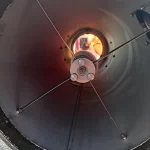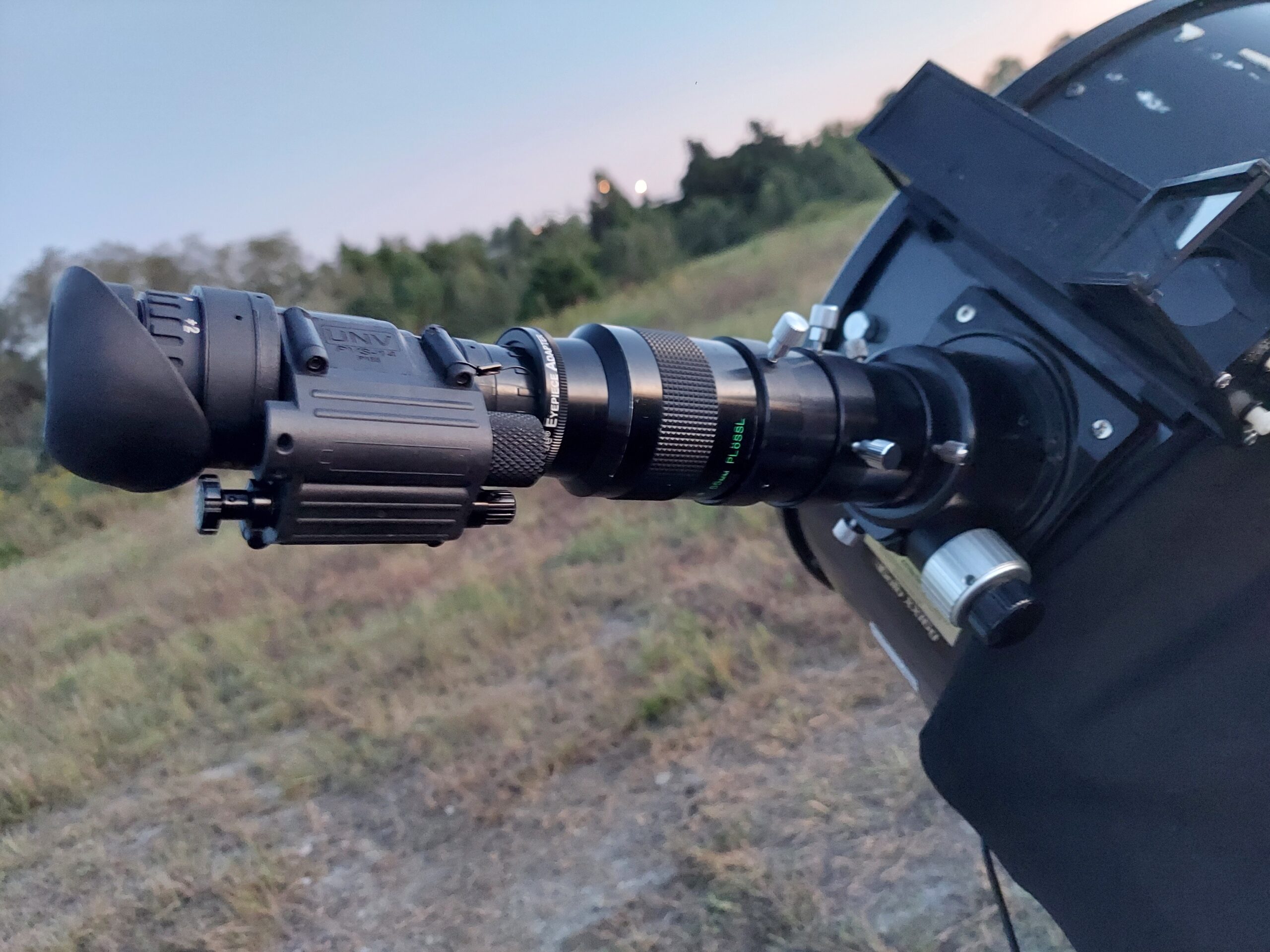Buying a used telescope is not that difficult. You just need to know what to look for.
When buying a used telescope, buy from another astronomer, check the mechanical parts, and be sure to look at the glass. Note the overall condition, dents and paint chips, as they may indicate how well the owner has cared for the scope. Be sure to test out any telescope you are buying. It does not need to be dark to do this.
Telescopes are essentially simple instruments, consisting of one or two optical elements, a focusing device, a mount/tripod combination, and a few accessories. A thorough once-over is usually sufficient to tell you what you need to know about a second-hand telescope.
Only when dealing with computerized (“go-to”) telescopes does it become a little more complicated.
Why Buy Used?
As with most things, the main reason people buy used telescopes is to save money.
Expect to pay 50-75% of the cost of a new instrument, perhaps even more for popular models.
How much you will save depends on the demand for astronomy gear in general, and the particular model under consideration.
At the time of this writing, demand is incredibly high as Covid-related restrictions have led to a growing interest in the hobby. Selection on the used market is limited, and prices are higher than normal.
But there may be a silver lining. If and when life returns to normal, I hope that the used market will be flooded with telescopes that people no longer want, which should drive prices down.
Telescopes tend to hold their value when they are kept in good condition.
How to Find a Used Telescope
If you are trying to get into this hobby for the first time, you may not know that there are a lot of places to find a used telescope.
You can find them on Facebook Marketplace and local yard sale sites, but there are other specialized websites that are a better option.
Try looking at Astromart, Cloudy Nights Classified, telescope Facebook groups and even local astronomy groups. These are great places to buy a scope.
When you are ready to buy, follow these steps:
1.Narrow it down
Decide on an approximate budget.
Then figure out your goals for the telescope.
Be realistic; expecting Hubble-quality photos for $500 is probably out of the question. Expecting anything remotely usable for $100 is also a stretch. Choose your trade-offs:
Do you want power or portability?
Do you want to travel with it?
Visual observing or astrophotography?
Quality optics or fancy electronics?
In astronomy, you can rarely get everything you want in a single purchase. Having the right expectations is key to enjoying this hobby.
2. Do your research
Once you’ve narrowed down the above, start reading to find out what types of telescopes fit your criteria.
Blogs like Telescope Boss and Give Me Space! are great sources of information.
Facebook groups and online forums are useful as well, keeping in mind that you’ll hear many conflicting opinions in such places.
Don’t get paralized in the research phase.
A telescope you use is much better than a telescope that you never buy. The best way to learn is to do, so just start. Buy a scope you can afford and start using it. If you decide it isn’t the best one for you
3. Diversify your search
Don’t just stick to Kijiji or Marketplace. Astronomy classifieds like CloudyNights and Astromart are likely to have a wider selection of better-quality gear. See if your country has an AstroBuySell site.
I have had great luck purchasing through Facebook Groups. People in these groups often know what they are selling and can answer questions you may have.
4. Check out an astronomy club if your city has one
Their members can give you advice and demonstrate telescope operation, which will make you a more informed and confident buyer.
These guys are usually happy to answer any questions they can. They will have an array of equipment for you to look at as well.
They might even have scopes for sale.
5. Be patient
If you know what you want, wait till you find it. Spend time saving up.
Explore different options and trust your gut when it comes to making a purchase.
What to Look For When Buying
1. Inspect the glass.
A certain amount of dust and dirt is to be expected on a well-used telescope mirror or lens, so don’t be alarmed if the optics look a bit dirty.
Chips and scratches on the glass or coatings are a bigger cause for concern; if they are minor, they might not affect performance but could lead to problems such as oxidation of a mirror surface down the road.
Look for evidence of moisture and debris on the inside surface of the glass, as this will be much more difficult to remove and might indicate that the telescope has been disassembled in the past.
Finally, avoid any telescope that appears to have mold or mildew on the glass.
2. Test the mechanical parts.
Turn the focusing knob and ensure the drawtube moves easily in and out of the telescope.
If the telescope is on a manually-driven mount, try moving it around to ensure it moves smoothly without sticking.
Everything should be tightly assembled, not loose or wobbly.
3. Note the overall condition
Are there dents in the optical tube?
Scratches in the paint?
Excessive dirt or rust?
While these things probably won’t impact the optical performance, they might indicate a scope which has not been well-maintained and should be reflected in the price.
4. Check the bits and pieces
If the seller advertised it as a complete telescope, it should have everything you need to start observing, including at least one eyepiece and a finder device, as well as any required adapters such as a star diagonal.
If some of these pieces are missing, you will have to buy them before you can use the telescope.
Even something as simple as a lens cap or dust cover can be a hassle to obtain after the fact.
5. Test it out!
You don’t need a dark sky to do this; a telescope should be able to focus on any object more than roughly a quarter-mile away.
If the telescope is electronically driven, power it up. Ask the seller to demonstrate that the hand controller works by moving the scope around.
After You Buy
- Keep in touch with the seller
If he’s not a total jerk, he should be willing to answer some basic questions about the gear he sold you.
- Read the manual
You’d be surprised at how many people skip this step.
If your telescope didn’t come with a manual, you should be able to download one.
Make sure you understand the basics of focusing, aiming, and magnification before venturing out in the dark.
- Be patient
Don’t assume you made the wrong choice just because you can’t get it to work properly straightaway; the first time out with a new telescope isn’t usually very productive.
- Put your wallet away
For some reason, newcomers feel the need to buy accessories right away. Use the telescope for a couple of weeks first to help figure out what your needs are.
- Have fun
You just bought a telescope! This is the beginning of a lifelong journey of exploration and discovery. The results are much more rewarding if you enjoy the process.
The Bottom Line
As long as a telescope hasn’t been neglected or mistreated, there isn’t too much that can go wrong with it. Minor damage or defects, even to glass surfaces, aren’t necessarily deal-breakers but should be leveraged for a better price.
Trust your gut. Get a telescope you deserve. Don’t settle for someone else’s junk.





